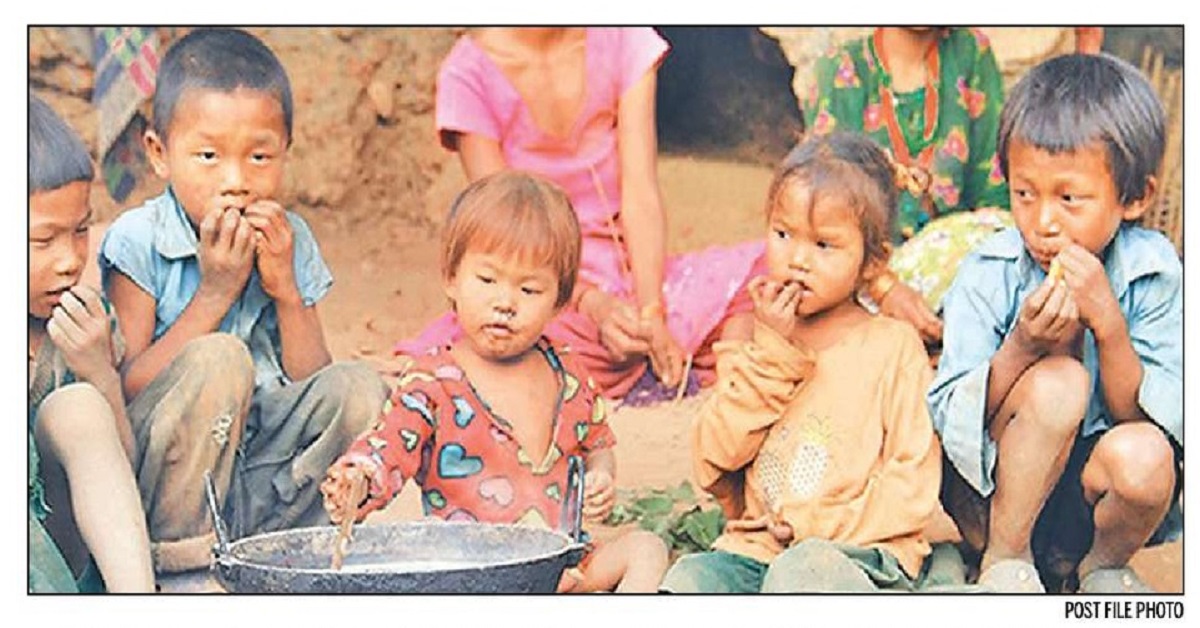
The Hungry and Forgotten
Malnutrition will continue largely unabated unless it is identified and approached
Quite often, poverty amplifies the risk of, and from, malnutrition. But in recent times it has become a global phenomenon where the issue affects not only developing countries but also the developed countries. Globally, one billion people are estimated to be suffering from malnutrition. In the context of Nepal to malnutrition and food security is a serious issue. The world's population that used to grow in an arithmetic proportion till 1900 has picked up exponentially in the recent times. Such growth will cause recurrent malnutrition problem because the present agricultural production has not been keeping up with the growing population. The problems of malnutrition relate directly to inequalities of income globally and within countries. In most Asian and African countries, the bulks of the population consume less than the recommended daily calorie intake of 2450 calories and are malnourished. Undoubtedly, some countries have been able to reduce malnutrition to some extent. China and India have some positive examples to show; but Sri Lanka, with strenuous efforts, has been able to achieve a nutritionally better quality of life than both China and India.
Solutions to the problem of malnutrition are expensive and complicated. They involve dealing with health conditions in slums, facilities in rural areas and cultural patterns which are counter-nutritional. A broad take on malnutrition would have to involve, at a minimum, better mechanisms for distributing food, as well as efforts to increase economic growth in many countries. Simple calculations of the number of additional calories needed by those now malnourished to close the nutrition gap suggest that an additional 500 calories for the half billion of people are necessary for the least developed countries. However, the solution assumes that such additional quantities of grain could be distributed equitably to the malnourished people in these countries. Until now, no organization or individual is ready to provide the necessary quantities of grains for the malnourished people. Moreover, any international distribution
POST FILE PHOTO system would require a great intrusion into the domain of national sovereignty since as for now neither the market nor the administrative means for such a distribution exist anywhere in the world. However, simply relying on extra economic growth and market adjustment to automatically result in higher food consumption by the poor people will certainly fail. Even if appropriate steps are taken to increase the average quantity of food available in the world, malnutrition with its long-run debilitation of human capacity will continue largely unabated unless it is identified and approached as a distant food problem. Therefore, the authorities concerned should pay special attention to check this problem. In developing and least developed countries, the rural population constitutes 60 to 90 percent of the total population. As a rural labour force, this population is a key player in boosting agricultural production.
However, their low productivity is one of the key aspects of the world's food problems from a supply side perspective. This is why there is a strong possibility of more malnutrition in the future. The rate of malnutrition in Nepal is alarming. In accordance with a report published by the World Food Program, the rate of malnutrition in Nepali children under five is 48 percent with an average rate of 60 percent in the mountain areas. This is the worst level of malnutrition in Asia and it is comparable to the worst levels of malnutrition in sub-Saharan Africa. According to the official data, about 36 percent of children in Nepal suffer from stunting, 10 percent from wasting and about 53 percent from anemia. Lack of access to health facilities and lack of awareness among the people mainly mothers about the need of nutrition have directly or indirectly affected malnutrition. Although Nepal'ssecond phase of Multisector Nutrition Plan (2015-2022) targets women, children, and adolescent girls, there is a need to execute the plan in an effective manner to combat malnutrition. Also, awareness about the ways to access health services can help mitigate malnutrition. Since agricultural production cannot be increased within a short span of time, food security programs can play a significant role in reducing malnutrition to a large extent. Furthermore, innovations in food technologies are of great importance.
Author: KHILENDRA BASNYAT
Basnyat is a freelance writer
(This article also published on The Kathmandu Post)


